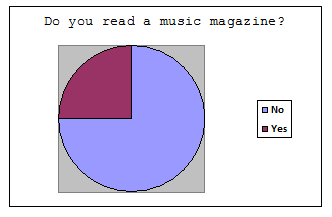




 1. Walkway
1. Walkway2. Sketch Block
3. NKOTB Fever
4. Levis Brush
5. Green Piloww
6. Champagne and Limousines
Choosing the right font and title for your magazine is crucial. I used dafonts.com and saved the fonts I preferred and thought would be suitable for the front cover of my magazine. I chose the sketchier fonts because I thought it would give my music magazine more individuality and personality. My personal favourite of all the fonts I have singuled out is 'levis brush' because i feel it is a lot different to the fonts you usually see on the front of a magazine and it again gives it that unusual alternative feel.
At the moment i am undecided on the title of my magazine but am edging towards an animal name because sound and music to them is very different to the way we hear sound. I like the name 'wolf' because it conjures up the imagery of a wolf howling, i also like 'oh deer' as a pun, i think of it as a fun name for a magazine, injecing a bit of humour into the overall concept.















